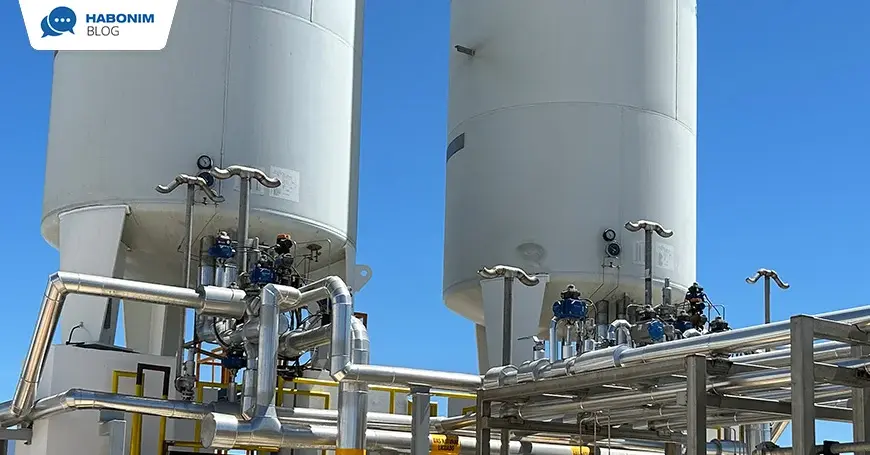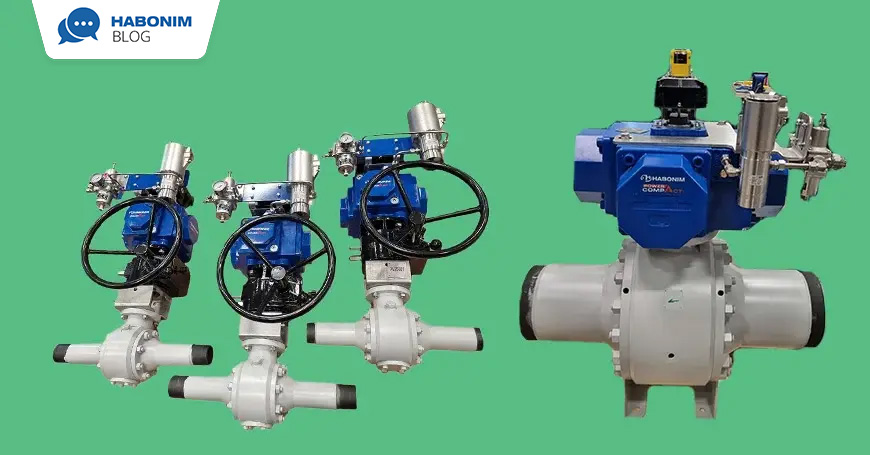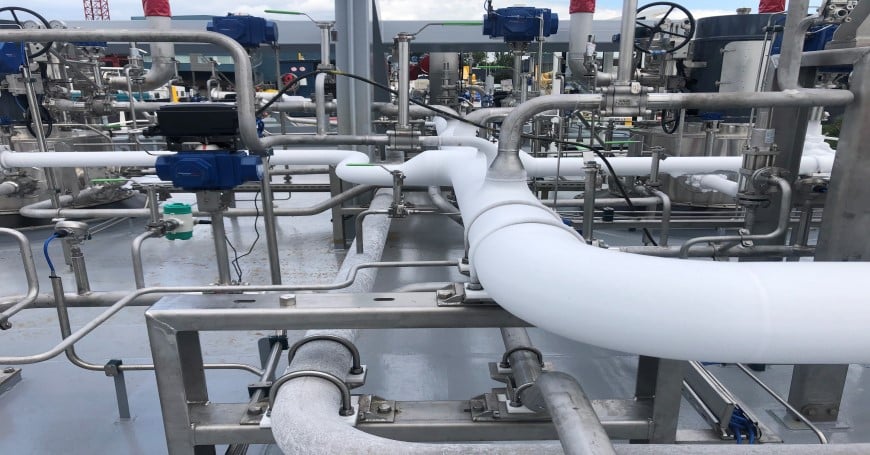Efficiency is key in engineering, and more so when it comes to LNG systems. Every improvement count, whether it's saving money, optimizing space, or reducing time.
The Challenge of Unidirectional Cryogenic Floating Ball Valves
When an engineering company specializing in LNG Valve Systems approached Habonim, they were about to embark on a significant project and needed Bidirectional cryogenic floating ball valves. Habonim rose to the challenge.
The Need for Bidirectional Valves
Bidirectional cryogenic floating ball valves are required for a few reasons:
- Cost Savings: Bidirectional valves eliminate pipe redundancy. The valve itself can handle the direction, leading to significant cost savings.
- Space Optimization: Bidirectional valves would allow for more compact system designs, freeing up valuable space.
- Time Efficiency: A single actuation mechanism would simplify the actuation process and save time in both installation and operation.
- CO₂ Reduction: Bi-directional valves make systems greener by improving energy efficiency, preventing CO₂ and gas leaks, and supporting carbon capture, all of which reduce emissions and environmental impact.
Understanding the Mechanism
One key advantage of this approach is understanding how the valve works. In this case, we have an activated valve that maintains a very traditional design. When we introduced the idea of a bidirectional ball valve to our customer, we essentially made the ball the same size as the pipe. So, when the ball is open, the ball valve functions as part of the pipe, seamlessly integrating into the system.
Applications of Valves
Valves play a crucial role in various parts of LNG systems:
- Terminals: Valves manage the flow from ship to tanks, tanks to trucks, gas to liquid, and liquid to gas.
- Shipping: Valves control the flow from ships to tanks, tanks to engines, which are dual fuel.
- Tankers: Valves are used for filling, draining, and backup between tanks.
- Dispensers: Valves provide LNG to trucks onshore.
Benefits of Smaller Valves and Actuators
To achieve these efficiencies, smaller valves and piping are required. We use a simple and more miniature actuator because it has a quarter turn, not a linear actuator, which saves money. The top entry trunnion ball valve, typically used for underground applications, is twice as expensive than traditional trunnion ball valves, and three times more expensive than floating ball valves.
Differences in Size, Weight, and Torque
The differences in size and weight are significant. The torque level is also important. In the floating ball valve, the seats hug the ball, whereas in the trunnion valve, the seats move instead of the ball. This results in less torque in the trunnion valve compared to the floating ball valve. The same applies to the top entry trunnion valve. All these valves come with type approvals.
Conclusion
Ultimately, the challenge of converting unidirectional cryogenic floating ball valves to bidirectional ones proved to be a rewarding experience. It highlighted the importance of innovation and efficiency that Habonim is bringing to its customers, as well as the significant impact the correct components can have on a project.







